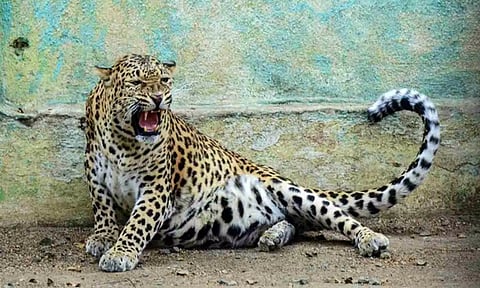

JODHPUR: The forest officials in Jodhpur have traced the movement of a leopard near the Sursagar area.
"We received information around 3:00 am from the police control room. Soon after the information was received, a team reached the spot to catch the leopard. We have checked CCTV footage and footprints of leopard were found," an official told ANI.
"Efforts are ongoing to tranquilize the large cat with utmost caution. If needed, cages will be installed. We will capture the big cat soon," an official further said.
India's leopard population has reached 13,874, with 1.08 per cent per year growth between 2018 and 2022, as per a report released by the Environment Ministry Bhupender Yadav last month.
Madhya Pradesh houses the largest population of leopards in the country: 3907 (2018: 3421), followed by Maharashtra (1985), Karnataka (1,879) and Tamil Nadu (1,070), according to the report.
This estimate represents a population of 70 per cent of leopard habitat, the Himalayas and semi-arid parts of the country, which are not tiger habitats, were not sampled.
The largest growth rate was in Central India and the Eastern Ghats at 1.5 per cent, as per the report.
However, there is a 3.4 per cent decline per year in the population growth of leopards in the Shivalik Hills and the Gangetic Plains.
Leopards are powerful big cats closely related to lions, tigers, and jaguars. They are facing escalating threats across their range in India.
Amidst habitat loss, human-wildlife conflict, and poaching, the National Tiger Conservation Authority (NTCA) spearheaded the fifth cycle of leopard population estimation, shedding light on the status and trends of these elusive big cats.
This cycle conducted a foot survey spanning 6,41,449 km to estimate carnivore signs and prey abundance. Camera traps were strategically placed at 32,803 locations, resulting in a total of 4,70,81,881 photographs, resulting in 85,488 photo-captures of leopards.
Reflecting on the report, the union environment minister said that Project Tiger's conservation legacy extends beyond tigers, as evident in the leopard status report, showcasing broader species protection efforts.